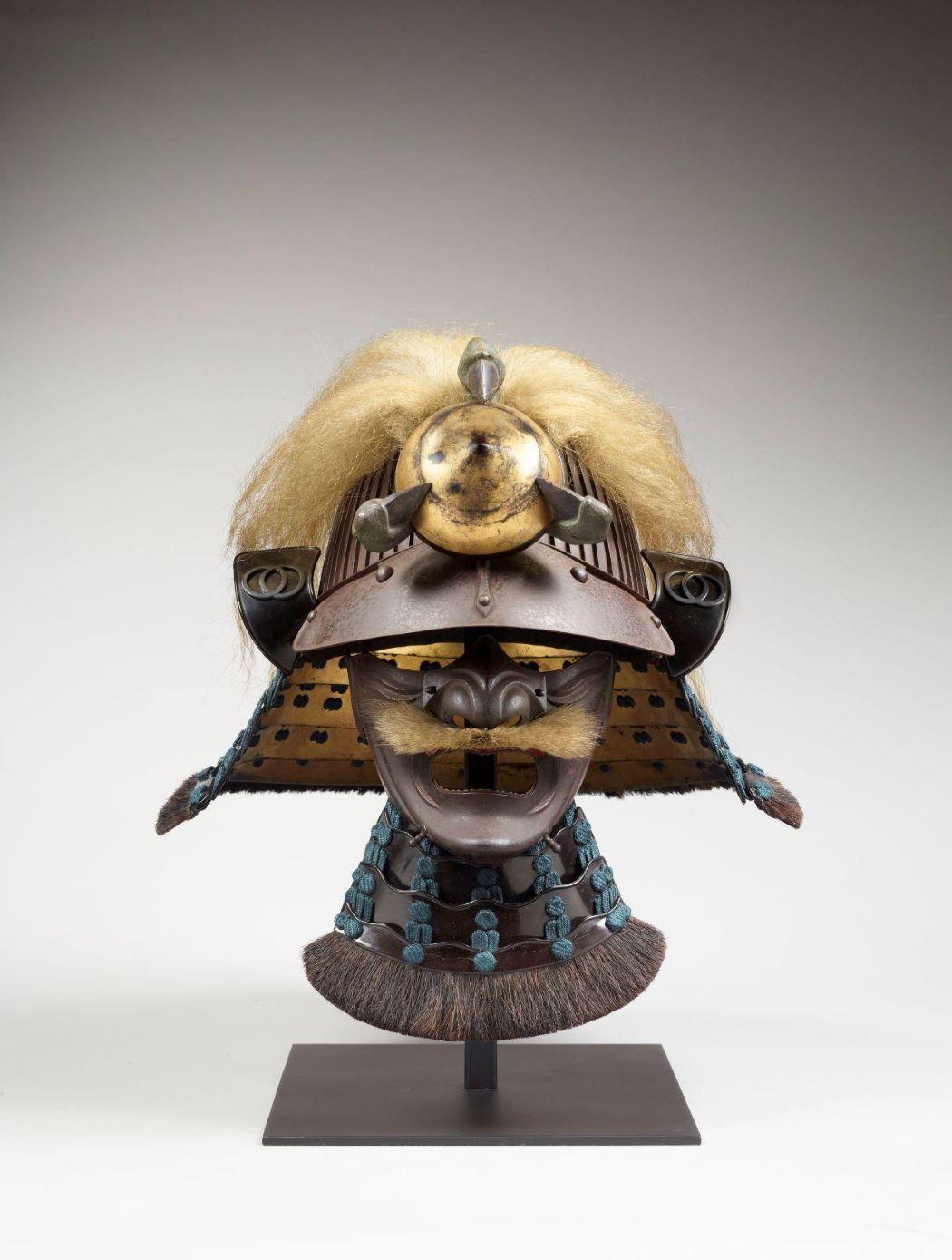The helmet, crowned with a large tuft of horsehair, and the grimacing patinated steel half-mask are attributed to the Myochin School, a branch of Ki, particularly well-known armourers in the Edo era. Usually the decorative excess of this type of piece indicates the evolution taking place in the Edo period, where armour lost its functional role to the benefit of pomp, glorifying its owner’s power and wealth.
Here that aspect is toned down by the sobriety of a rather uncommon Buddhist iconography, three lacquered wooden dragon claws surrounding a tama, or Buddhist jewel, reputed to fulfil wishes. Without explicitly belonging to the category of “spectacular helmets”, kawari kabuto, this one, by the iconography of its maedate decorative ornament, as well as the rather rare use of animal materials, evokes the helmet’s symbolical and propitiatory role.
So the presence of bear hairs, discreet here, may be explained by the fact that in Japan at the time the bear was considered an utterly majestic and formidable animal, his evocation here allowing to inspire fear in enemies.

